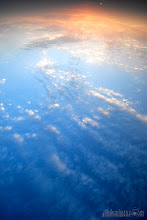O2 + (solar energy/ UV Radiation) → O + O2 → O3
-Ozone has a boiling point of -112 ° C, a melting point of −192.5 °C, and is considered a less stable allotrope of the diatomic O2. According to the the U.S. Environmental Protection Agency, a single atom of chlorine can destroy more than a hundred thousand ozone molecules. Along with chlorine, bromine, nitrogen, hydrogen, and oxygen gases also destroy ozone molecules. Ozone is considered to be a dangerous chemical and air pollutant when found in the lower atmosphere (below the stratosphere) because of the many negative effects it has on plants and animals. In animals, it can damage the respiratory system and also has many of the same effects it has on humans while in plants, it burns and kills the plant's cells.
-The ozone layer is found in the stratosphere, which is above the troposphere (the lowest region of the atmosphere) from 15-30 kilometers above sea level. About 90% of all of the worlds ozone can be found in the stratosphere. The ozone layer's main job is to prevent as much ultraviolet radiation from entering the troposphere and lower atmosphere as possible. The ozone layer blocks anywhere from 97-99% of the utlaviolet light given off from the sun In recent years past, we have used products that only deplete and reduce the amount of ozone in the ozone layer. Since there is not as much ozone to block the UV rays, more and more UV rays are entering the lower atmosphere and are harming humans. The artic circle is where the ozone layer is most depleted. The cold temperatures there speed up the breaking down of ozone molecules when certain chemicals come into contact with the ozone. In the winter of 1999-2000, the ozone layer over the artic circle lost over 60% of its ozone and is currently rebuilding, but scientists say that it will take decades for the ozone layer to rebound there. One chemical that has been used a lot that harms the ozone layer is dichlorodifluoromethane (CFC-12), which consists on chlorine, flourine, carbon atoms and otherwise known as freon-12. This chemical has been a significant part of most air conditioners, refrigerators, and aerosol spray products. Although it was a significant component of most of the products listed above, it has been banned more than ten years ago by the environmental protection agency and is not used any more. Along with banning CFC-12, the epa has also banned many other substance that they claim and have classified as ozone depleting substances.


No comments:
Post a Comment